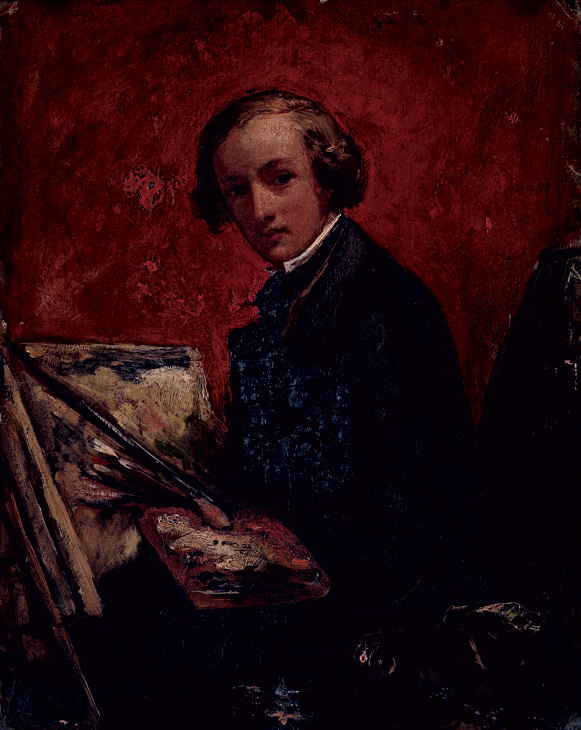When John Everett Millais enrolled at the Royal Academy Schools in 1840, at the tender age of eleven, he was instantly nicknamed “the Child”. Seven years later, with numerous prizes under his belt, including such academic accolades as a silver medal in the Society of Arts’ competition for “Chalk Drawing from the Antique”, the RA’s youngest ever student was still keen to cultivate the image of a dutiful child prodigy. In 1847 Millais painted his first extant self-portrait, exhibit one of some 130 works in Tate Britain’s impressively compendious retrospective of the artist’s work. Wearing a black velvet gentleman’s painting coat, he turns towards the viewer with an engagingly quizzical expression on his beardless face. He looks like a young man determined to impress his elders and betters.
A year earlier, Millais had launched himself on what would prove to be a fascinatingly uneven career with an ambitious foray into history painting. At the age of sixteen, his first submission to the Royal Academy’s annual exhibition had been Pizarro Seizing the Inca of Peru, a colourful exercise in Victorian baroque costume drama. The subject is the extermination of the Inca peoples by Francisco Pizzarro, abbreviated by Millais to a lurid melee at the centre of which the conquistador seizes the Inca king Atahuallpa and prepares to run him through. A gaggle of hapless native Peruvians cower as the sun sets and a Spanish priest holds aloft a crucifix, silhouetted against the crimsoning sky. The style of the picture is conservative, but its implications are unsettling. Atahuallpa is posed on a dais that resembles an altar, making him and his people the victims of an unholy blood sacrifice carried out in the name of God and the Church. Whatever else it might be, the work is hardly an...


